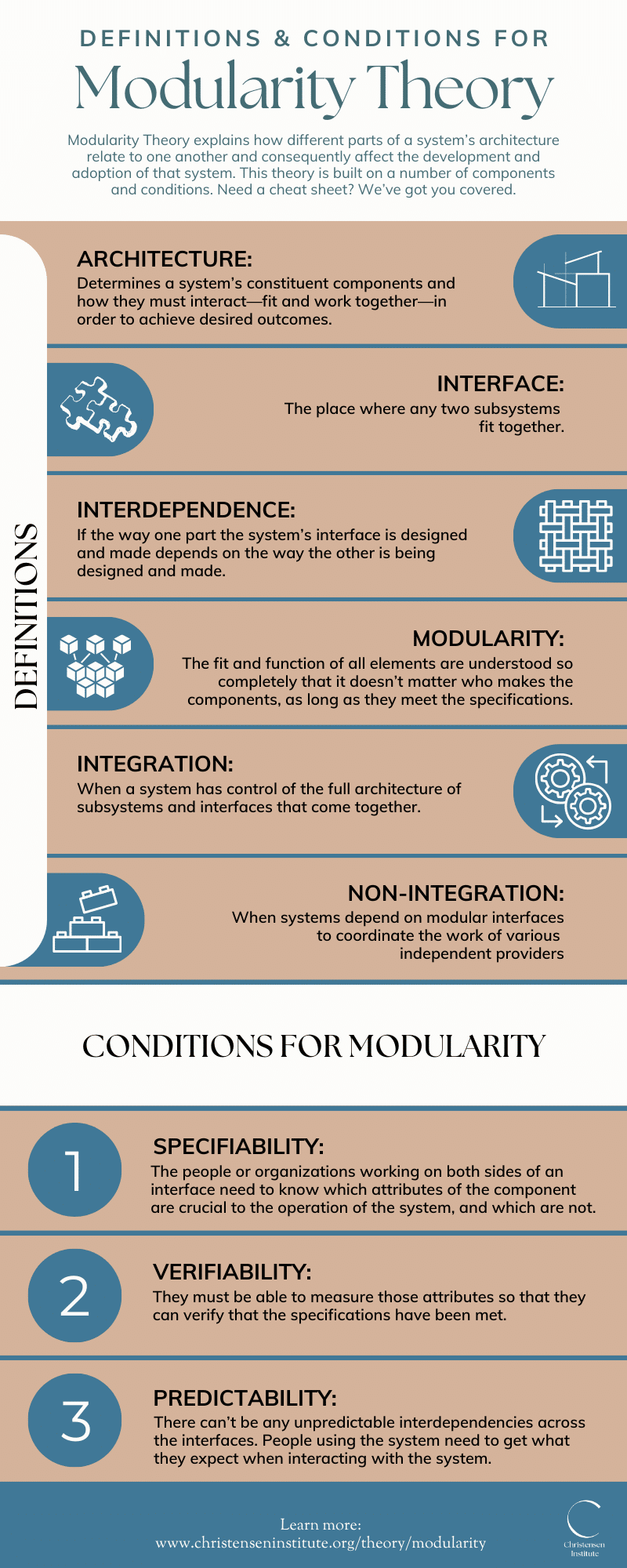Infographic: Definitions & Conditions for Modularity Theory
Modularity Theory explains how different parts of a system’s architecture relate to one another and consequently affect the development and adoption of that system. This theory is built on a number of components and conditions. Need a cheat sheet? We’ve got you covered.
Architecture: Determines a system’s constituent components and how they must interact—fit and work together—in order to achieve desired outcomes.
Interface: The place where any two subsystems fit together.
Interdependence: If the way one part the system’s interface is designed and made depends on the way the other is being designed and made.
Modularity: The fit and function of all elements are understood so completely that it doesn’t matter who makes the components, as long as they meet the specifications.
Integration: When a system has control of the full architecture of subsystems and interfaces that come together.
Non-integration: When systems depend on modular interfaces to coordinate the work of various independent providers
Conditions for Modularity
- Specifiability: The people or organizations working on both sides of an interface need to know which attributes of the component are crucial to the operation of the system, and which are not.
- Verifiability: They must be able to measure those attributes so that they can verify that the specifications have been met.
- Predictability: There can’t be any unpredictable interdependencies across the interfaces. People using the system need to get what they expect when interacting with the system.
Learn more: www.christenseninstitute.org/theory/modularity


